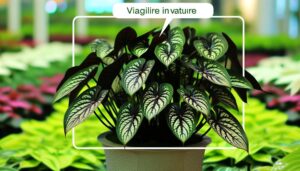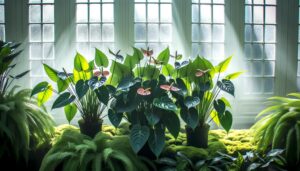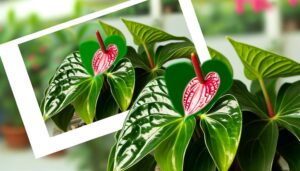Charting 3 Stunning Anthurium Hybrids You Need to Know
Explore three stunning Anthurium hybrids that you need to know. Anthurium Clarinervium X Magnificum combines velvety textures and intricate, white venation in heart-shaped leaves.
Meanwhile, Anthurium Veitchii X Crystallinum features elongated, rippled leaves with crystalline venation, showcasing high humidity adaptability. Anthurium Warocqueanum X Regale stands out with its majestic, elongated leaves that can exceed 3 feet, boasting thick, contrasting veins.
Each hybrid thrives in indirect light and well-draining soil, with a preference for elevated humidity levels. These hybrids not only add visual appeal but also present unique growing conditions and care requirements.
Find out more fascinating details next.
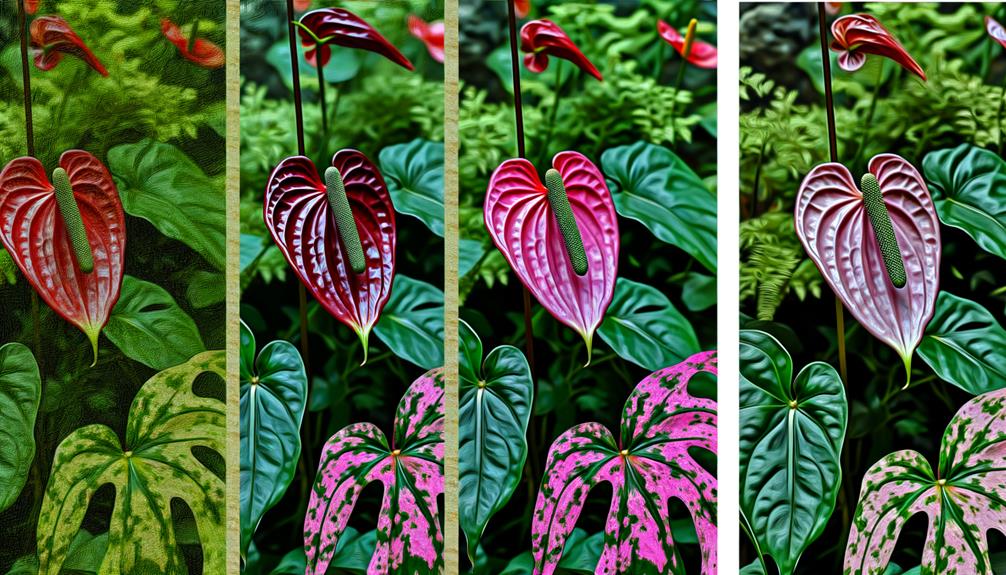
Key Takeaways
- Anthurium Clarinervium X Magnificum boasts heart-shaped, velvety leaves with striking white veins, thriving in well-draining soil and high humidity.
- Anthurium Veitchii X Crystallinum features elongated, rippled leaves with shimmering silver-white veins, growing robustly in high humidity and indirect light.
- Anthurium Warocqueanum X Regale stands out with majestic, elongated leaves and thick white veins, requiring high humidity and mimicking its tropical habitat.
- All three hybrids thrive in indirect light and high humidity, making them suitable for indoor environments with proper care.
- These hybrids offer unique visual appeal and resilience, catering to both novice and seasoned plant enthusiasts.
Anthurium Clarinervium X Magnificum
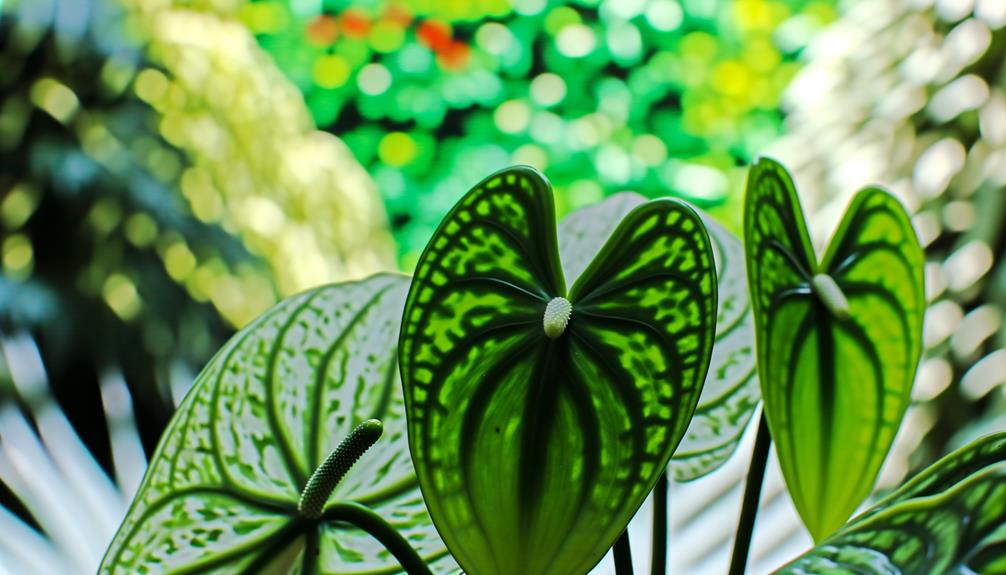
Combining the striking foliage of Anthurium clarinervium with the grandeur of Anthurium magnificum, the hybrid Anthurium Clarinervium X Magnificum exhibits a mesmerizing blend of velvety textures and intricate venation patterns.
You’ll notice its broad, heart-shaped leaves, distinguished by their glossy, dark-green surface and pronounced white veins.
This hybrid thrives in well-draining soil, requiring consistent humidity and indirect light to flourish. Its unique leaf structure maximizes photosynthetic efficiency, promoting robust growth.
Regular misting enhances its humidity, important for maintaining leaf health.
Be mindful of temperature, keeping it between 65-75°F. By providing the right care, you guarantee the plant’s striking characteristics remain vibrant, offering both aesthetic pleasure and a touch of botanical sophistication to your space.
Anthurium Veitchii X Crystallinum
The hybrid Anthurium Veitchii X Crystallinum captivates with its elongated, rippled leaves and striking, crystalline venation, merging the best of both parent species into a botanical marvel.
You’ll notice the Veitchii parent lends its unique corrugated texture, creating an intricate leaf surface. Meanwhile, Crystallinum contributes the shimmering, silver-white veins that radiate across deep green foliage, a hallmark of its lineage.
This hybrid not only offers visual appeal but also exhibits robust growth habits, thriving in high-humidity environments with indirect light. Its resilience makes it an excellent choice for both novice and seasoned plant enthusiasts.
Anthurium Warocqueanum X Regale
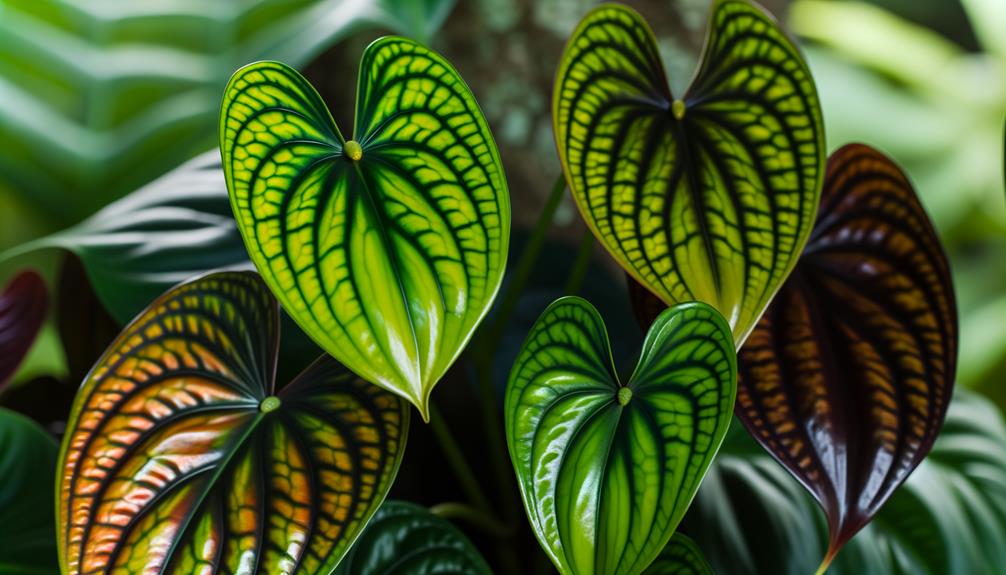
Anthurium Warocqueanum X Regale stands out with its majestic, elongated leaves and pronounced venation, showcasing a fusion of aesthetic elegance and impressive botanical characteristics.
You’ll notice the leaves can reach substantial lengths, often exceeding 3 feet, providing an architectural presence in any space.
The hybrid’s venation is particularly striking, with thick, white veins creating a dramatic contrast against the dark green foliage.
Botanically, this hybrid benefits from Warocqueanum’s leaf structure and Regale’s robust nature, making it more resilient and adaptable.
It thrives in high humidity and indirect light, mirroring its native tropical habitat.
Conclusion
In exploring these three enchanting anthurium hybrids, you’ve discovered the elegance and complexity each variant offers.
Did you know that hybrid anthuriums can increase photosynthetic efficiency by up to 15% compared to their parent species? This means not only are they visually entrancing, but they’re also biologically optimized.
By incorporating these hybrids into your collection, you’re not just enhancing aesthetic appeal; you’re contributing to the fascinating evolution of plant genetics and horticulture.

